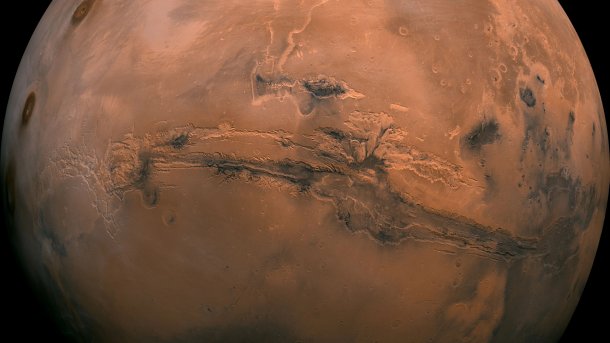Study: Moss could create a basis for life on other planets
Is terrestrial life possible on Mars? Researchers have discovered that a moss survives Martian conditions - and see it as the basis for further life.

A species of moss could survive on Mars, say researchers.
(Image: NASA/JPL-Caltech)
A research team from the Chinese Academy of Sciences has identified an extremely resilient moss that can survive extreme external influences. The scientists assume that the desert moss called Syntrichia caninervis could even live on Mars. They generally consider it suitable for cultivation outside the Earth. This could be a starting point for creating biologically sustainable habitats outside the Earth in the future, the team explains in a study that has now been published in the specialist journal The Innovation.
In order to be able to live on planets other than Earth, many research projects have focused on adapting crops so that they can survive in the soil and harsh conditions outside of Earth, for example on Mars, the researchers explain. With Syntrichia caninervis, the team thinks they have found a plant that fulfills these conditions.
Almost dried out condition makes moss viable
The moss can survive the loss of 98 percent of its water and only needs seconds to become photosynthetically and physiologically active again after the addition of new water. "The plants looked green when they were saturated with water and turned dark green and then black as they gradually lost water," the research paper states. "Only two seconds after rehydration, the moss returned to its green color."
The team stored the moss in a freezer at -80 °C for five years and immersed it in liquid nitrogen at -196 °C for one month - the plant survived. Regeneration was better when the moss was placed in the cold environment in a dried state. However, hydrated plants also managed to survive the frost period and subsequently form new shoots.
Gamma radiation could also do little harm - even though the team exposed the plant to hundreds of times the lethal dose for humans. For most plants, one fifth of this dose is enough. Gamma radiation is an electromagnetic wave radiation, similar to that emitted by an atomic nucleus. "Gamma radiation is of the same physical nature as visible light, but is considerably more energetic and has a high ability to penetrate matter," explains the Federal Office for the Safety of Nuclear Waste Management.
"Overall, our results indicate that Syntrichia caninervis is one of the most radiation-resistant organisms we know of," summarizes the research team. The tardigrade is one of the organisms previously known to be resistant to radiation.
Mosses as the first plants on land
Under simulated Martian conditions, such as extremely low temperatures, little oxygen, dehydration and intense UV radiation, the plant remained alive and maintained its vitality. The plants were exposed to the conditions for up to seven days and then only needed 15 days to regenerate before they produced new shoots. During the experiments, the researchers found that the plants showed a better regeneration result when they were dried and encountered the Martian conditions. Hydrated plants survived being exposed to Martian conditions for a day, but formed fewer new branches than the dry plants.
The researchers attribute the remarkable survivability to the origin of the mosses. As one of the presumed first embryophytes (land plants) to colonize land on Earth, the small pioneer plants were originally resistant to drought, UV radiation and temperature fluctuations, which enabled them to adapt particularly well to the harsh transition zones between land and water.
Still a long way to life on other planets
The research results showed that the moss could survive on Mars both in a dried and hydrated state. The plant is therefore a promising candidate for colonizing Mars. The moss could provide the basis for establishing an ecosystem on Mars: It produces oxygen, binds carbon and contributes to soil fertility - the basis for higher plants and animals as well as a prerequisite for possible colonization by humans.
"Although there is still a long way to go before we can create self-sufficient habitats on other planets, with S. caninervis we have demonstrated the great potential of a pioneer plant for growth on Mars," summarizes the team. "Looking to the future, we anticipate that this promising moss could be brought to Mars or the Moon to further investigate the possibility of colonizing and growing plants in space."
(are)